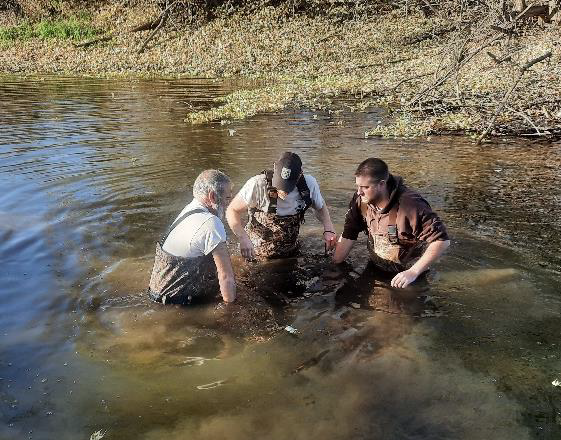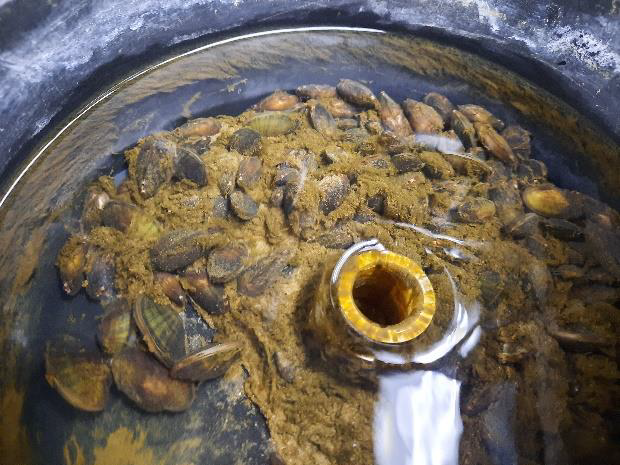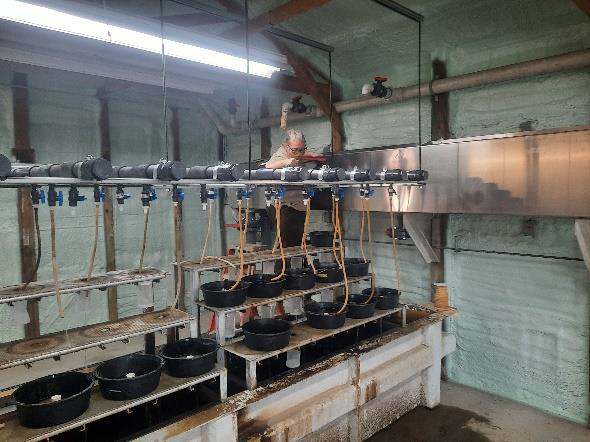
The MARS trailer is installed at Blackhawk Park each year as soon as spring flood waters recede, with electricity to run air and water pumps, clean water to maintain the filtration system, and UV sterilization systems operating as biosecurity measures. These features make the MARS trailer a very productive culture system for many species of juvenile mussels, and also require a team effort to close-out the system at the end of the season. We were lucky to have low water levels and several balmy Wisconsin fall days to pack up the trailer, haul the water pump and its filter cage out of the slough, bring everything back to the hatchery, and power wash away a season’s worth of river mud, algae, bugs, and unwanted pests.
The juvenile mussels that spent the summer in the MARS trailer are now settled into their winter homes in rearing pans and baskets in the mussel building. This year, the mussel building is getting a major renovation: in addition to a re-design of the rearing pan system, the last picture below also shows insulated building walls and a new head tank for incoming pond water. We’ll feature these and many more upgrades to the building in an upcoming issue of Genoa News and Notes!
By: Beth Glidewell

Higgins Eye juveniles settle into their winter home in the mussel building.

Megan adjusts water flow to pans in the newly redesigned system. Photos by Beth Glidewell/USFWS.
